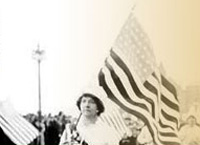The Twentieth Century
From the Gilder Lehrman Institute:
"Edward Ayers, President of University of Richmond, discusses how to define an 'era.' He reviews African American history and women's history throughout the 20th century to illustrate the fact that one event does not necessarily lead to another, and that history does not always follow a logical trajectory."


